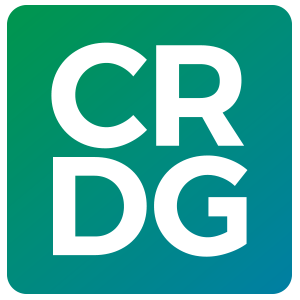
Projects for State Agencies & Foundations
Evaluation of SPARK
As a partner in the SPARK (Supporting Partnerships to Assure Ready Kids) project, CRDG, through Morris Lai and Sue York, continues its work with children, ages 3-7, in the Wai‘anae area. While project funding ended in May 2008, evaluation of those elements that have been sustained beyond the grant will continue for another 30 months. The Ready Kids Follow Up (RKF) study is funded by the W.K. Kellogg Foundation through Walter MacDonald & Associates (overall SPARK evaluators) and is implemented in Hawai‘i by the Institute for Native Pacific Education and Culture (INPEACE) in part through a subcontract with CRDG. Five of the original eight sites nationwide are participating in the RKF phase of the SPARK initiative. The original rendition of the project, funded 2003–2008, focused on improving the transition from home to school. Some of the activities helped prepare children for school, while others focused on helping schools and numerous community and state partners prepare for incoming kindergartners. The RKF study will continue through 2010.
Health Surveys
PRE has continued to work with the Hawai‘i Departments of Education and Health to monitor health risk behaviors among Hawai‘i’s student population. Known collectively as the Hawai‘i School Health Surveys, the 2005 versions of the Centers for Disease Control and Prevention’s (CDC) Youth Risk Behavior Survey (YRBS) and Youth Tobacco Survey (YTS), with Hawai‘i–specific modifications, were conducted under principal investigator Susan Saka, in 23 middle and 23 high schools in Hawai‘i. This marks the third YTS and the seventh YRBS that CRDG has conducted. The results of the ongoing studies are used in a variety of ways by the Departments of Education and Health, the University of Hawai‘i, and other agencies. These include identifying focus areas for curriculum development and teacher training and for prevention and treatment efforts and resources. Other uses include identifying risk behaviors of Hawai‘i public school students in Grades 6–12, informing health and safety curricula, program planning by the Department of Health and community organizations, and applying for grants to address identified risky behaviors.
Hawai‘i Nutrition Education Needs Assessment
Susan Saka, Morris Lai, and Sandra Shimabukuro led a 4-year study on the nutritional habits and height and weight of 4th and 10th graders in Hawaiʻi. This study is the third installment in a long-term study that has looked at similar issues approximately every ten years. Collecting data on students’ diets, attitudes towards school lunch, levels of physical activity, and height and weight, the team was able to report on the nutrition needs of Hawaiʻi students using the best data available. The study found a low mean energy intake by students in the current study as compared to the previous studies. There was a low consumption of fruits and vegetables and dairy products and a frequent consumption of sweetened beverages and candy. About one fifth of the students were classified as overweight; three fifths were in the healthy range.
Transitions to Teaching
The College of Education and CRDG have teamed up with the College of Tropical Agriculture & Human Resources, and the Hawaiʻi Department of Education to address the shortage of mathematics and science teachers in Hawaiʻi’s secondary public schools. The five-year, federally-funded Transitions to Teaching program provides support for mid-career professionals and recent graduates in fields other than education to help them complete teacher training programs and attain teacher licensure. The project’s goal is to produce 100 licensed science and mathematics teachers. CRDG’s role is to determine what kinds of support these students need to reach their goals and to determine whether these needs are being met. The evaluation Principal Investigator is Terry Ann F. Higa.
21st Century Community Learning Centers
The 21st Century Community Learning Centers program, as mandated in the No Child Left Behind Act of 2001, establishes community centers in Hawaiʻi schools that provide academic enrichment and other services and activities designed to reinforce and complement the regular academic programs. Priority is given to complexes with a high percentage of students coming from low-income families, and with programs that serve the full preK-12 range. CRDG staff have worked as the external evaluator with many schools over the course of the project. In 2005, CRDG worked with the 21st Century Community Learning Centers in 21 schools in the Kahuku, Waiʻanae, Hāna, and Kekaulike complexes. Terry Ann F. Higa has served as Principal Investigator.
Schools served:
Lā‘ie Elementary
Hau‘ula Elementary
Ka‘a‘awa Elementary
Kahuku Elementary
Sunset Beach Elementary
Kahuku High and Intermediate
Kamaile Elementary
Leihōkū Elementary
Mā‘ili Elementary
Mākaha Elementary
Wai‘anae Elementary
Wai‘anae Intermediate
Wai‘anae High
Ha‘ikū Elementary
Kalama Intermediate
King Kekaulike High
Kula Elementary
Makawao Elementary
Pā‘ia Elementary
Pukalani Elementary
Hāna High and Elementary




